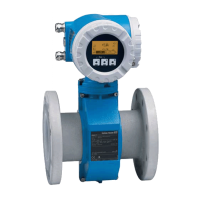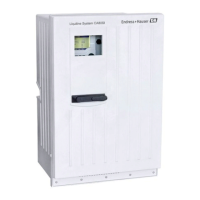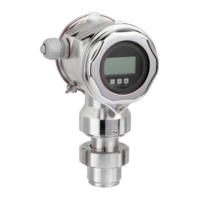OXY5500 Optical Oxygen Analyzer BA02195C
1
–8 Endress+Hauser
Endress+Hauser’s fiber-optic oxygen sensors are made with 2 mm polymer
optical fibers. The sensing portion is a 4 mm stainless steel probe. As a
standard, the probe is mounted in a 1/4 in. Swagelok Union Tee using a 1/4 in.
x 4 mm adapter as shown in Figure 1–5. Please contact your sales
representative for more information.
How an oxygen sensor works
The principle of measurement is based on the effect of fluorescence quenching
by molecular oxygen.
Principle of fluorescence quenching by molecular oxygen (refer to Figure 1–6):
(1) Fluorescence process in absence of oxygen
– Absorption of light: Excitation energy from the analyzer to the
sensor spot.
– Excited state: Sensor spot becomes excited.
– Emission of light: In the absence of oxygen, the sensor spot
decays to original energy state. The light emitted during decay is
quantified by the analyzer.
(2) Fluorescence process in the presence of oxygen
– Absorption of light: The light from an LED is absorbed by the
sensor spot.
1/4 in. compression “tee” flow-
through fitting
4 mm oxygen dipping probe mounts in
the compression “tee”
Figure 1–5 Standard fiber-optic oxygen sensors
fittings

